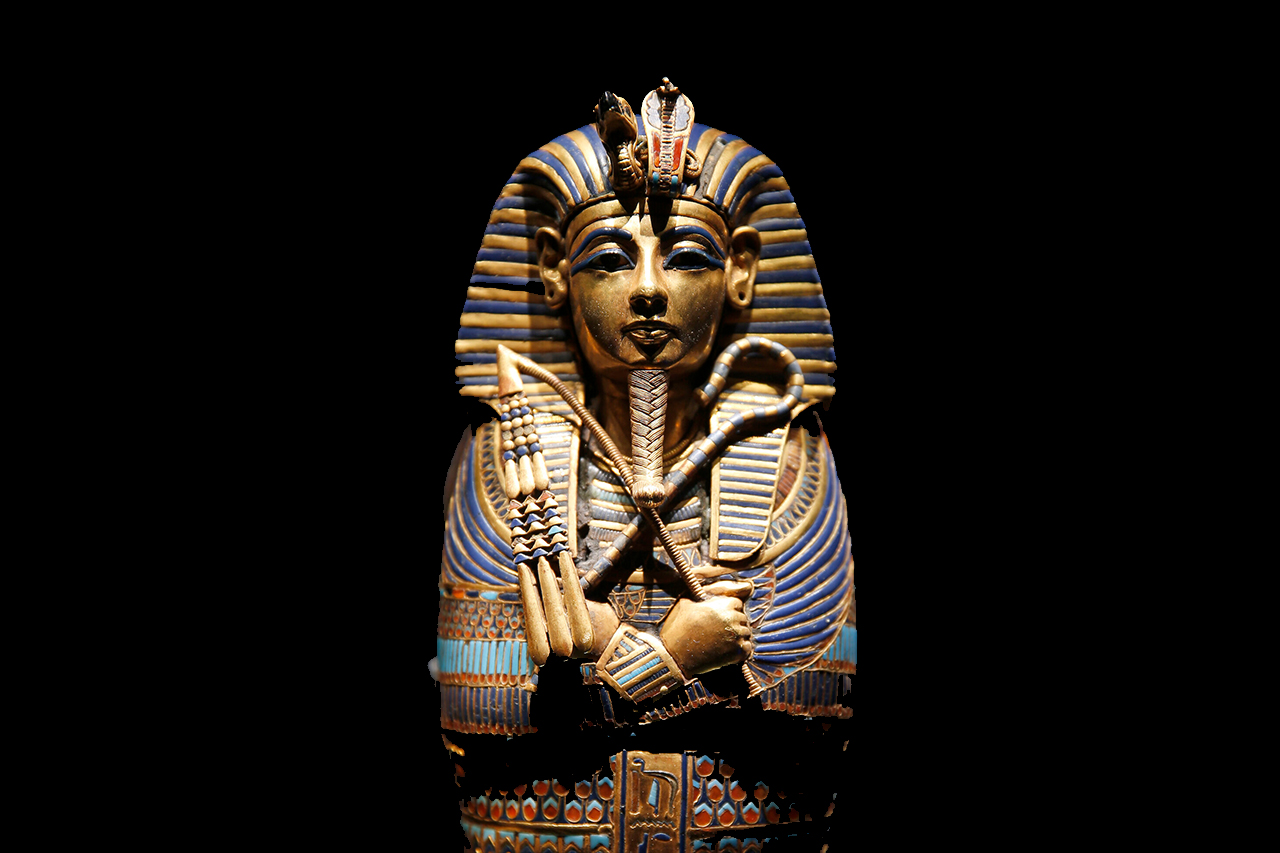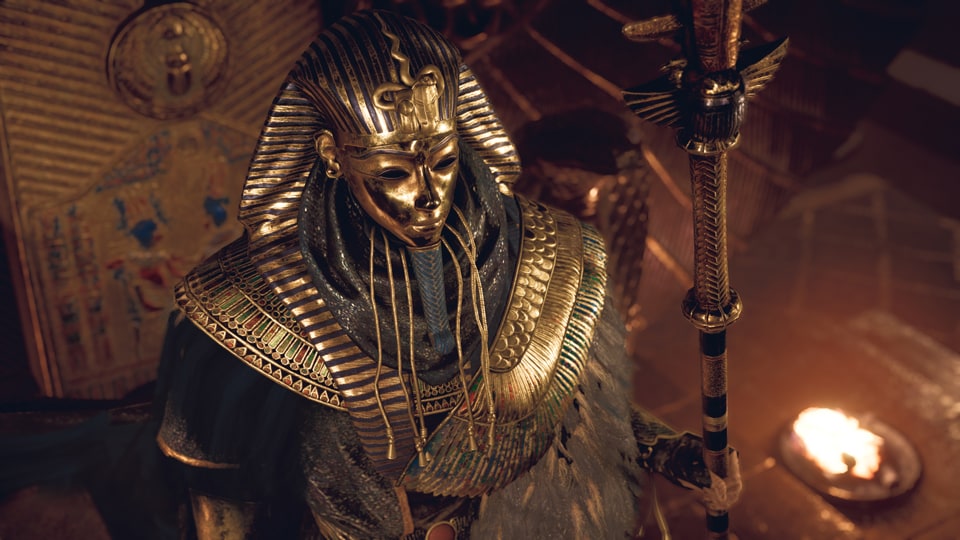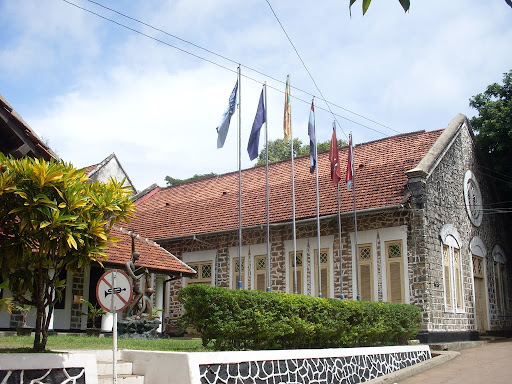THE CURSE OF THE PHARAOHS

Does it really exist?
“Death will slay with his wings whoever disturbs the peace of the pharaoh”- so reads the inscription on the tablet found in Tutankhamen’s tomb. While sceptics claim that the curse is a hoax, scientists posit that the presence of mould spores inside the ancient burial chambers may have caused the mysterious deaths of pyramid explorers, resulting from an allergic reaction. Still others believe that the curse is real and the tomb builders may have reached down through forty centuries to avenge the desecration of the grave of their king. They argue that when one considers some of the isolated cases of deaths of people who were not directly involved in the opening of the tomb of the pharaoh, the theories of infections, allergies, bacteria, parasites, poison or radiation do not hold water.
Although the Cult of the Dead originated in India, it culminated in Egypt. The obsession of the Egyptians with this cult was such that they erected in the fertile Nile Valley the pyramids-gigantic shells of masonry which house the sarcophagi of their mummified kings, facilitating the entry of royalty, in an intact state of the body, into the hallowed precincts of their chief god Osiris, the god of death, agriculture, afterlife and resurrection. But these pyramids did not remain untouched, for hordes of tomb robbers plundered them of their treasures over the centuries despite the dreadful curses laid by the priests upon those who violate the slumbering peace of the royal departed. At the time of the fall of the Egyptian Empire in 1150 B. C. all the royal tombs had been broken into.
Quite accidentally and fortunately, the tomb of Tutankhamen (1341-1323 B. C.), commonly referred to as King Tut, had not drawn the attention of the thieves. Howard Carter (1874-1939), a renowned English Egyptologist, discovered the tomb on 04th November 1922, financed by Lord Carnarvon. On 22nd February 1923 Carnarvon entered the tomb first, followed by Carter.
Carnarvon had met with an automobile accident in 1901 in Germany, making him unhealthy and weak. As his physician recommended him a warmer climate, he travelled in 1903 to Egypt where he became interested in Egyptology.

Death strikes down people after opening of Tutankhamen’s grave
While the excavation of the resting-place of the young pharaoh was in progress, Carnarvon was bitten by a mosquito. Following an illness, he died at the Hotel Continental in Cairo on 05th April 1923. The cause of death was diagnosed as pneumonia. Carnarvon’s son told that as he entered the hotel room where his father was dying, all the lights suddenly went out and they had to light candles. As this was something curious, they asked the Cairo electric company, but they were unable to give any rational explanation for the lights going out and then on again. The son reported one other strange incident in Highclere, a village in Hampshire, England: Carnarvon died shortly before two o’clock Cairo time. About the same time, Susie, his fox terrier bitch whom his father loved so much, suddenly started howling, sat up on her hind legs (she had lost her front paw in an accident), and dropped dead.
A few years later Carnarvon’s brother committed suicide and another unexplained insect bite caused the death of his stepmother.
Arthur Mace (1874-1928), a Tasmanian-born English archaeologist and Egyptologist, who helped Carter to open the tomb, complained about growing exhaustion. He died after falling into a deep coma which physicians were unable to diagnose.
George Jay Gould (1864-1923), an American financier, travelled to Luxor (ancient city of Thebes, located along the Nile) and to the Valley of the Kings where Carter showed him the sensational discovery of the Tutankhamen’s grave. The next morning Gould was stricken with a high fever and that evening he died of a fatal illness which the doctors later diagnosed as bubonic plague.
Joel Wood, a British industrialist, visited the grave site, went back to England by ship, and died of a high fever.
Archibald Douglas Reid, a radiologist, who was the first to cut the cords around the mummy in order to X-ray the body, suffered from debilitating feebleness and in 1924, upon his return to England, died.
Carnarvon’s wife, Lady Almina, died allegedly of an insect bite in 1929 while Richard Bethell, Carter’s secretary, died the same year under strange circumstances: one morning Bethell was found dead in his bed, of a circulatory collapse. Lord Westbury, his 87-year-old father, on hearing of his son’s death, hurled himself from the seventh storey of his London home. While the corpse was taken to the cemetery, the hearse ran over a little boy.
Alfred Lucas (1867-1945), an English analytical chemist and a member of Carter’s team, was the government chemist employed by the Department of Antiquities in Egypt. He conducted the autopsy on the mummy of Tutankhamen along with Prof. Douglas Derry, another scholar, at the Anatomical Institute of Cairo University in 1925. The examination brought about tragic consequences, as Lucas died soon after from a heart attack, and a little later Derry died of circulatory collapse.
By 1929, twenty-two people who had been directly or indirectly involved in the tomb of Tutankhamen had met with an untimely death. Thirteen of them had taken part in opening the grave. Those who died included Professors Winlock and Foucrat, the archaeologists Garry Davies, Harkness, and Douglas Derry, and the assistants Astor and Callender.
Another legend says that a sailor, who won in a poker game an ornament in the shape of a scarab (a beetle sacred to the ancient Egyptians) from Tutankhamen’s tomb, gave it to his daughter as a birthday present, whereupon he left home again and was lost at sea. The girl, who received the scarab, fell ill and was diagnosed with leukaemia and died shortly thereafter. Her mother, fearing the misfortune the ornament had brought, sold the scarab to another person who too gave it to her daughter. She too contracted leukaemia and died.
The author Philipp Vandenberg in his book Der Fluch der Pharaonen (The Curse of the Pharaohs), written in German, in which he made a stunning investigation into the 4000-year-old secrets of the ancient Egyptians, cites the interesting case of Ezzeddin Taha, a physician and biologist at Cairo University. On 03rd November 1962, Dr. Taha announced in a press conference that he had tracked down the cause of death of the pyramid explorers, attributing it to a harmful disease-carrying fungus that caused feverish inflammations of the respiratory system. He said that this fungus had remarkable resistance to survive in mummies or grave chambers for 3000-4000 years. Itches in the form of skin rashes and laboured breathing had also long been observed in people who had worked intensively with Egyptian papyri. Dr. Taha, admitting however, that infections alone could not account for the deaths of so many scholars, assured that the curse of the pharaohs belonged to the realm of fairy tales and it could be averted by antibiotics. Later Dr. Taha, with two of his co- workers, were driving to Suez. About 70 km north of Cairo, his car suddenly swerved to the left of the straight desert road, right into the path of an approaching car. The doctor and his two aides died on the spot.
The author also recalls his conversation in Cairo’s Omar Khayyam Hotel, with Dr. Gamal Mehrez, the Director-General of the Antiquities Department of the Egyptian Museum of Cairo. Mehrez did not believe in the curse, as he had been involved in tombs and mummies all his life. He said that he was living proof of what was a coincidence. Four weeks after the conversation, Mehrez died of a circulatory collapse at the age of 52.

The bizarre case of the high priestess
Yet, more potent was the curse laid upon those who handled the mummy-case of a high priestess in the Temple of Amon-Ra, who was thought to have lived in Thebes in about 1600 B. C. As the mummy-case was found in an unusually good state of preservation, it was bought by a person named Douglas Murray while he was visiting Egypt many years back, and this curious object was sent off to London. His two companions died during the voyage back to England and they were buried at sea. When the ship arrived in the port of Tilbury the valuable Egyptian curiosities Murray had bought in Cairo had been stolen, except for the mummy-case. Two Egyptian servants who had handled the mummy-case also died within a year. As for Murray, he met with a terrible accident when his gun exploded in his hand unaccountably while being on a shooting expedition up the River Nile. His arm was amputated above the elbow.
When Murray looked at the face of the priestess carved on the mummy-case, her eyes seemed to come alive with a malevolent look at him that turned his blood cold. He hurriedly gave the mummy-case away to a lady whose mother broke her leg and died after months of prolonged suffering. The lady lost her fiancé and her pets died. She fell ill herself with a complaint that could not be diagnosed and lived in constant fear of death. The lady, on the advice of her lawyer who agreed to make her will, returned the mummy-case to Murray, whereupon she recovered from her illness, but Murray, whose health deteriorated, was left with the only option of presenting the accursed relic to the British Museum. But the series of strange events continued: a photographer took pictures of the mummy-case and when developed, it showed living, malevolent eyes in the carved face of the priestess. He died mysteriously a few weeks later. An Egyptologist who looked after the exhibit pending the museum’s decision to accept it, was found dead in bed. It was even said that the British Museum presented the unwanted relic to the New York Museum and despatched it on the ill-starred Titanic. Yet, perhaps it would seem far-fetched to hold the ancient Egyptians responsible for that particular disaster at sea.
But those who take the tomb curses seriously, believe that they apply to the first man who enters the burial chambers. It is also said that those who believe in curses are more likely to be struck down by them. It is worthy to note here that no disaster befell Carter (only his canary-bird, bitten by a cobra, died), who had carried out the real work of exploring the tomb of Tutankhamen. He continued his work until 1939 when he died, aged 64.
Although the Bible teems with curses, they were rare in ancient Egypt. The curses were uttered only by the pharaoh who spoke with divine legitimacy and authority. The lengthy history of Egypt has attested that the ancient Egyptians were the most intelligent people who had ever lived. Even Moses in the Old Testament, who was the leader of the Israelites and the lawgiver, and who saved his nation from the slavery in Egypt, was taught all the wisdom of Egypt. As a baby, he was found in the bulrushes by the bank of the River Nile and was adopted by the daughter of the pharaoh and raised as an Egyptian.
The author Homer and tragedian Euripides, the statesmen Lycurgus and Solon, the philosophers Thales and Plato, the mathematicians Eudoxus and Archimedes undertook voyages from Greece to Egypt to complete their education in these disciplines. Plato even went so far as to call his own people-the Greeks-children as compared to the Egyptians.
Solving the riddle
Vandenberg writes in his book that experiments that have been conducted indicate that certain geometric structures are able to accumulate energy and then give it off in more concentrated form. Scientific concern about this possibility has focused on the Egyptian pyramids. The French radiologist Jean Martial and Czech radio engineer Karl Drbal from Prague experimented with pyramid models and demonstrated the relationships between the pyramid shape and physical processes within it. Martial proved that the pyramids speed up mummification while Drbal confirmed how the exact alignment within a pyramid could sharpen a blunt razor blade. They questioned whether the Egyptian scholars possessed a knowledge of applications of energy which modern science has not discovered as yet. Can pyramid geometry mobilise psychic forces that cause death? Does this provide a clue to the unsolved mystery of the curse?
According to the author, an infection seems to be a plausible reason for the curse and many scientists have preferred to pursue this thought. The American doctors had discovered a disease among explorers of Inca caves in Peru. The disease, named histoplasmosis, is an infection caused by a fungus found in the droppings of bats. It can be fatal if spread all over the body. The cause of the puzzling deaths connected with the pharaohs’ tombs has also been attributed to this disease.
Another explanation for the curse of the pharaohs could be poisonous worms who produce a toxic substance. The poison, reaching the circulatory system of the victim through the intestinal blood vessels, destroys the red corpuscles, leading to anaemia. However, no deaths have been reported amongst archaeologists from the poison of these parasites, although it may cause desperate exhaustion.
Poison too has been cited by him as a much more tenable theory, considering the great Egyptian achievements in toxicology. Menes, the first pharaoh, grew poisonous plants around 3000 B. C. and had their efficacy recorded. Cleopatra (69-30 B. C.), the last ruler of the Ptolemaic Kingdom of Egypt, was a master mixer of poisons. The Roman General Marcus Antonius or Mark Antony (83-30 B. C.) ate with Cleopatra, his lover, only in the presence of a taster.
It would be equally safer to guess at the presence of poisonous gases and vapours, in precipitated form, in the burial chambers of the pharaoh. Such powerful poisons as aconite, arsenic and conium were used to paint artifacts and walls. In the airtight tombs, such vapours could precipitate and never disappear, damaging the health of those who come into contact with them, Vandenberg says.
According to chemists and bacteriologists, microbes that can survive for millennia, if given the right conditions, could be another possible explanation for the curse. Some bacteria become dangerous only after dying, when they secrete toxins that cause all kinds of diseases-especially meningitis. The pharaohs’ rock tombs and pyramids were ideal breeding grounds for bacteria.
Finally, the author quotes Prof. Luis Bulgarini, the well-known atomic scientist, who, to the surprise of archaeologists, said in 1949 that the priests and wise men of ancient Egypt understood the laws of atomic decay and were familiar with uranium. Bulgarini said that the Egyptians may have resorted to radiation to protect their sacred places, adding that the floors of the tombs could have been covered with uranium or the graves could have been finished with radioactive rock. ***







